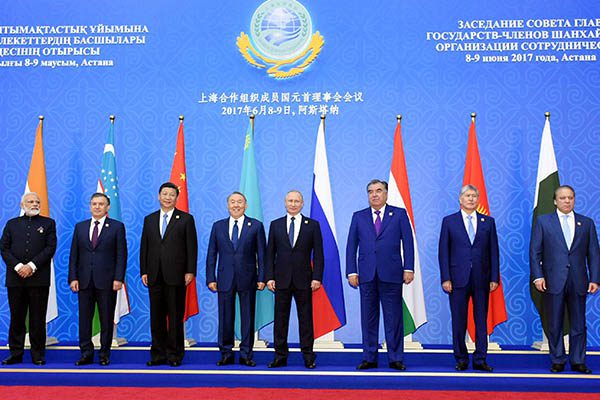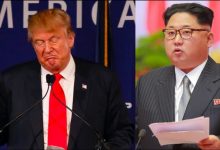The recent Sino-US trade war may turn out to be boon to enhance business relations between India and China. It has enlarged the scope for India to export more products, such as cotton, soybean meal and maize, according to Indian exporters. The huge market for cotton in China can be tapped by India after China retaliated the US action by imposing a high tariff. Of the 5 million bales of cotton imported yearly by China, 40 percent is imported from the USA. There is no import duty on cotton import into China from India. A report, for Different Truths.
Chinese media were euphoric that the 18th Summit of Shanghai Cooperation Organisation (SCO) held in Qingdao, China, where India and Pakistan were admitted as new members of the organisation, will open a new page for better relations between the two countries. Chinese newspaper Global Times headlined the event “China, India ready to deepen their economic ties.” The Chinese media noted that despite Modi’s refusal to be party to China’s Belt and Road Initiative, the summit provided the ground for China to enhance multilateral cooperation among BRI member countries.
Out of eight members only India was against BRI. Other member countries reaffirmed their support to the initiative to expand economic connectivity. India’s refusal was prodded by a trust deficit. Modi was emphatic in saying that trust should be built before the BRI takes place.
Interestingly, against the high hopes by Chinese media, the Indian media remained reticent, wondering how economic connectivity would improve without the trust deficit being removed. India and China waded through a tumultuous phase in the past two years. A series of disputes erupted, with Doklam standoff being the worst, further deepening the trust deficit.
Though this incident cast a long shadow on bilateral relations, the subsequent events rejigged hopes for a rapprochement. The BRICS summit in September 2017 and the visit of India’s new foreign Secretary Vijay Gokhle to China added some fresh air to rework relations between the two countries. Gokhle was instrumental in resolving the Doklam issue and creating the ground to restart negotiations.
Although the two countries have similarity in terms of population, there is a big disparity in terms of the economy. The Chinese economy is five times bigger than India’s even though they were of similar status in the 1990s. By virtue of faster growth; China has become the biggest trading partner of India. The growth was not restricted to trading; China also became the new game changer in India’s manufacturing activities.
The change in the nature of bilateral relations from trading to manufacturing signifies a new era albeit amidst a long political bitterness between the two countries. China helped transform the manufacturing landscape of India from resource base to technology-oriented, component-based industry. By this, China emerged as the second pioneer, after Japan, in bringing structural changes in the country’s manufacturing dynamism. Japan was the pioneer in the development of automobile industry, which is a component base technology-oriented industry.
However, the other side of the Chinese engagement is the significant increase in the trade deficit, nearly 39 percent of which in 2017-18 was due to Chinese export to India. A Chinese think tank is talking about a new pattern of economic cooperation between the two countries, but it is doubtful if the wide disparity between the two economies is being adequately taken into account.
According to Pangol Institution, a public policy think tank in China, India, and China enjoy three advantages, which are: a large and low-cost labour force, a big domestic market and a large pool of human capital for the supply of science and engineering talents. The think tank feels that opinion that while China has properly utilised these assets to develop its industry from labour intensive and export-oriented base to cutting edge high valued technology-oriented industries like integrated circuits, pharmaceuticals, and aviation, India utilized them for the development of highly competitive technology and capital-intensive industries like pharmaceuticals and IT. As a result, even though progress was made for intermediate levels component-base industries, like cell phones and automobiles, they lag behind in terms of global competitiveness. The thin tank feels that China can be a role player in improving Indian industrialisation.
Further, the recent Sino-US trade war may turn out to be boon to enhance business relations between India and China. It has enlarged the scope for India to export more products, such as cotton, soybean meal and maize, according to Indian exporters. The huge market for cotton in China can be tapped by India after China retaliated the US action by imposing a high tariff. Of the 5 million bales of cotton imported yearly by China, 40 percent is imported from the USA. There is no import duty on cotton import into China from India.
Given the tit-for-tat actions, the US-China trade tiff is unlikely to be sorted out in near term. From this perspective, the chances for better India-China relation will become brighter after India enters the SCO. Now, there are two multilateral institutions – BRICS and SCO – where misgivings and distrust between India and China can be resolved through negotiations. Modi’s proposal for another informal meeting with Xi Jinping augurs well for better relations between the two countries.
Subrata Majumder
©IPA Service
Photo from the Internet






 By
By
